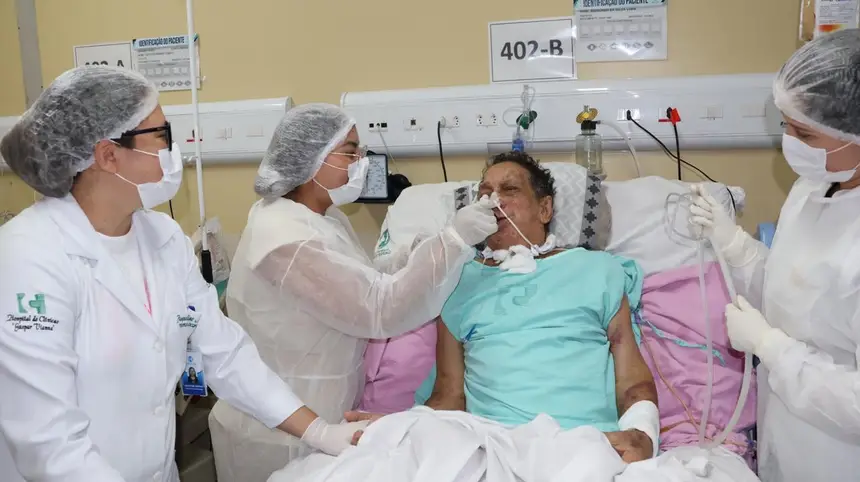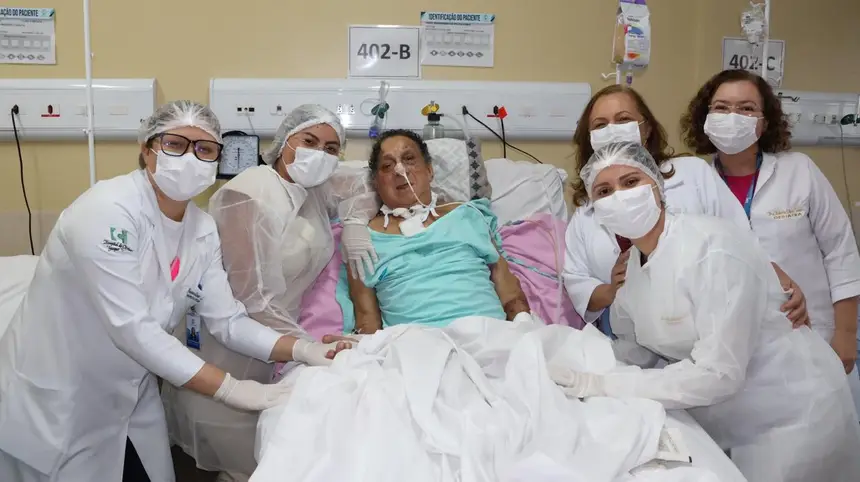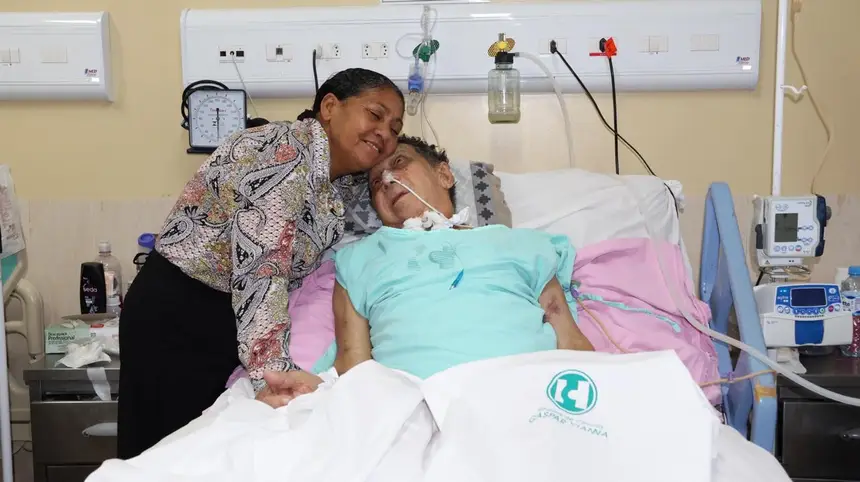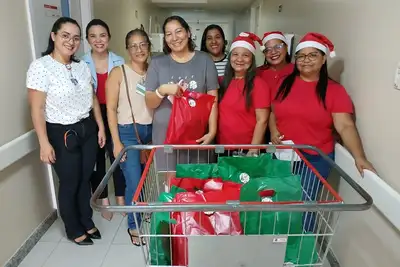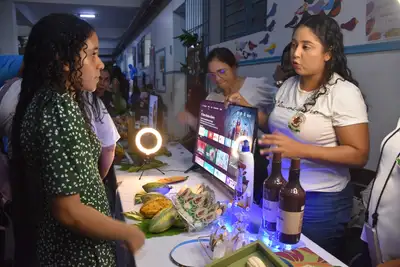Patient in palliative care revives emotional memory by having açaí at the Hospital de Clínicas
Action led by the multiprofessional team at HC reinforces the importance of emotional memory and comprehensive care
A simple gesture turned into a special moment for retired Raimundo Lobo, 79, from Ananindeua, who is hospitalized at the Gaspar Vianna Hospital de Clínicas (HC). He is facing severe heart problems and is being treated at the institution's Medical Clinic.
After almost two months in the hospital, he tasted, for the first time in a long time, a bit of açaí – a food that accompanies his story and that of almost all people from Pará. The patient today depends on enteral feeding and tracheostomy, which prevents him from having conventional food. Therefore, when opportunities arise to offer taste stimuli, the team relies on what is called a “comfort diet,” a fundamental part of palliative care.
“Even using enteral feeding and tracheostomy, Mr. Raimundo can receive small taste stimuli when he is clinically stable. These moments are not for nutritional purposes, but they allow him to feel the smell and taste of something he misses, always in minimal volumes and with speech therapy ensuring safe swallowing along with the physiotherapy, occupational therapy, and nutrition teams,” explained speech therapist Lorena Pamplona, responsible for assessing the patient's swallowing and ensuring that the gesture was not only special but also safe.
“In Mr. Raimundo's specific case, he is a patient who has devices. He has both the enteral feeding tube and the tracheostomy. So his care is comprehensive with the entire multiprofessional team, especially with the physiotherapy and occupational therapy teams,” Lorena explains.
“So we do this joint work to provide the patient with a diet that we call a comfort diet, because he will not have a full oral diet. His diet is basically through an alternative route. So, in the moments we can provide stimulation, we try to bring him this comfort, this memory,” she pointed out.
The açaí was chosen because it was the food he mentioned when the team asked what he missed. “We managed, with the hospital's nutrition team, to provide the stimulus, which is açaí, something regional, cultural. It brings a very good emotional memory and is one of the highlights of the speech therapy requests here at the hospital. The patient always wants water, wants coffee, wants açaí,” says Lorena.
“Even if it is a small volume, the patient can eat, can swallow safely. We are there to ensure that he can do so in a way that does not harm his clinical case. And bringing this memory, this palliative diet, since he is in care that requires this type of attention,” she added.
By the bedside, closely following everything is Jacirema Lobo, Raimundo's wife, who has been staying day and night at the hospital for two months. For her, the action represents more than technical care. “Look, this gesture represents a very charitable act. This hospital welcomed him and welcomed me too, because I am here until today, two months with him.”
For her, the care from the team has turned into an emotional bond. “They have a very special care for him, as if he were their father, a family member. My husband has no children, so I stay here with him. But as I told him: you always had the desire to be a father and look, you have gained so many daughters here. And the boys too. The doctors, the female doctors… all are wonderful. They have welcomed us very well. The Hospital de Clínicas is to be congratulated along with the team,” she said, moved.
Palliative care - Geriatrician Roberta Tavares, from the HC Palliative Care Committee, emphasizes that actions like this translate what it means to look at the person and not just the disease. “The objective of the word ‘palliate’ means to care, especially for human suffering. For that patient where we can no longer have a proposal for cure or improvement of functionality, we propose to care in all aspects of the patient's life. Not just the disease, but the patient, the person, what he likes, what he needs, and what contributes to his well-being,” she explained.
According to her, care involves several dimensions. “Palliative care is to care 100% for physical pain, but also for spiritual pain, social pain, psychological pain… everything that involves suffering in a patient's life,” she added.
“The purpose of this action is to offer a food that is the basis of our diet, which is part of our emotional memory. It is about a patient who can no longer eat naturally and who needs devices for that. The team trained his swallowing and asked what he would like, what he misses,” the doctor explained about the açaí stimulus.
For the specialist, the gesture summarizes the essence of welcoming care. “Caring means not only to avoid suffering but to give the patient the pleasures he can still have. It is a simple act, which does not require much, but for the patient, it has a very significant meaning. And for the family too. Palliative care is not ‘there is nothing more to be done.’ On the contrary: there is much to be done,” she concluded.
The experience of açaí for Mr. Raimundo translates the purpose of palliative care: to use small pleasures to restore to the patient moments of dignity, autonomy, and emotional memory. A care that does not focus on prolonging time but on filling time with meaning.


